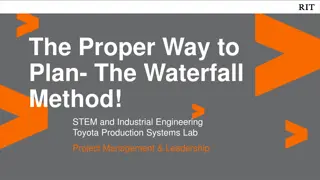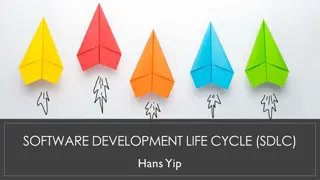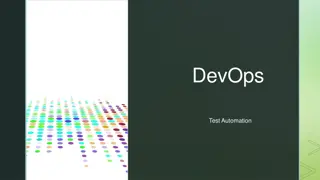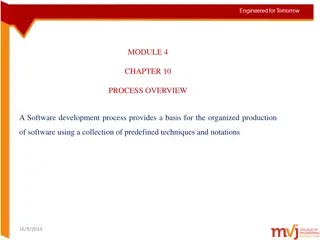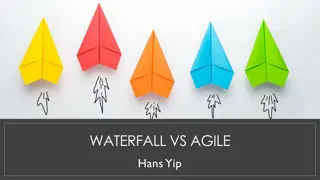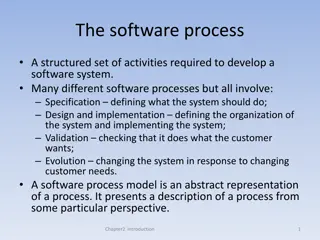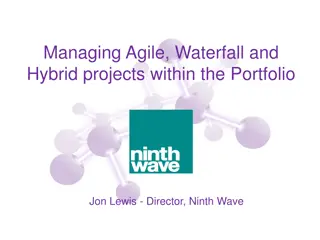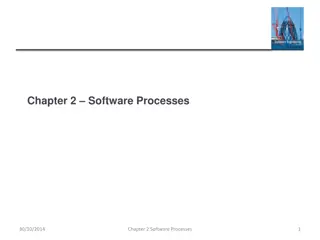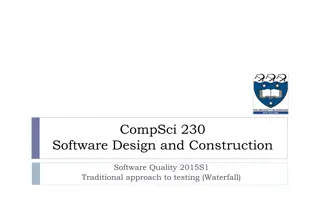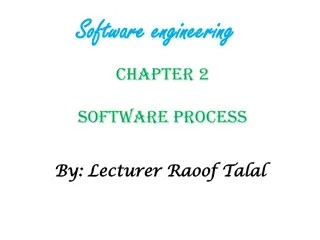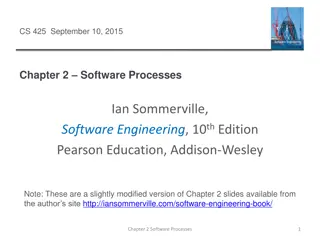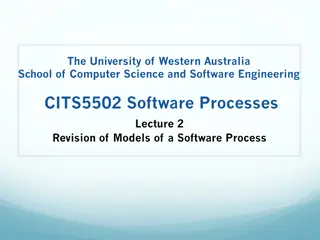Understanding the Waterfall Software Development Life Cycle
Waterfall Method is a classic approach to the Systems Development Life Cycle, with linear and sequential phases. It emphasizes clear initial requirements, strict phase order, and early fault detection but lacks flexibility for revision and user involvement until the testing stage. Toyota is an example of an organization still using this methodology for projects with fixed requirements and requiring better control.
- Waterfall Method
- Software Development Life Cycle
- Classic Approach
- Sequential Phases
- Clear Requirements
Download Presentation

Please find below an Image/Link to download the presentation.
The content on the website is provided AS IS for your information and personal use only. It may not be sold, licensed, or shared on other websites without obtaining consent from the author. Download presentation by click this link. If you encounter any issues during the download, it is possible that the publisher has removed the file from their server.
E N D
Presentation Transcript
Software Development Life Cycle Waterfall Method
Background Introduced by Winston Royce in 1970 Illustrated as a flawed model Oldest and most well tested methodology Still used by 70% of software development organizations (VersionOne survey, 2007)
What is it? The classic approach to the Systems Development Life Cycle Linear and sequential Several phases of development Each phase is assigned to a separate team 100% complete and absolutely correct Seen as flowing steadily downward
Stages Goes downwards and not backwards
Pros and Cons Pros Cons Clear initial requirements Strict order of phases Faults are detected early Emphasis on documentation Well-known and easy to use Does not allow for revision Time wasted waiting Late testing period Not suitable for smaller projects Users are not involved until testing stage
Who Uses and When? Use only when: Clear and fixed requirements Experienced organization or inexperienced leader The project is simple or large The project requires better control Who still uses: Toyota - embedded software (moving toward Agile)
Modified Methodology The V-Model Aorta Lifecycle Model Sashimi Model Royce Model Combat Waterfall s assumption that the requirements will not change
The V-Model Development and testing stages start simultaneously Allow for Developing Acceptance Criteria early
Waterfall vs. Agile Method Waterfall Agile Benefits small projects Strict with Predictability Big Design Up Front To fix problem, must redesign entire system One BIG model release at the end Benefits projects with constant changing requirements Flexible with Adaptability Fit puzzles together at the right time A working model Agile is a lower overhead method that emphasizes values & principles rather than processes.
Conclusion Be aware of your chosen technologies capabilities Emphasis on requirements and design No room for changing of requirements Enforces discipline Schedule Know what your customers needs are!
References Agile Introduction for Dummies, part 1. http://agileintro.wordpress.com/2008/01/04/waterfall-vs-agile-methodology/ Melonfire, Contributor. Understanding the pros and cons of the Waterfall Model of software development. http://www.techrepublic.com/article/understanding-the-pros-and-cons-of- the-waterfall-model-of-software-development/6118423 Mochal, Tom. How to pick the right method for your project. http://www.techrepublic.com/article/waterfall-vs-rad-how-to-pick-the-right- method-for-your-project/1044102 All About the Waterfall Model http://www.waterfall-model.com/ Waterfall SDLC Methodology http://skysigal.xact- solutions.com/Resources/SoftwareDevLifeCycle/WaterfallMethodSDLC/tabid /600/Default.aspx Elssamadisy, Amr. Toyota Using Waterfall? http://www.infoq.com/news/2010/04/toyota-waterfall



